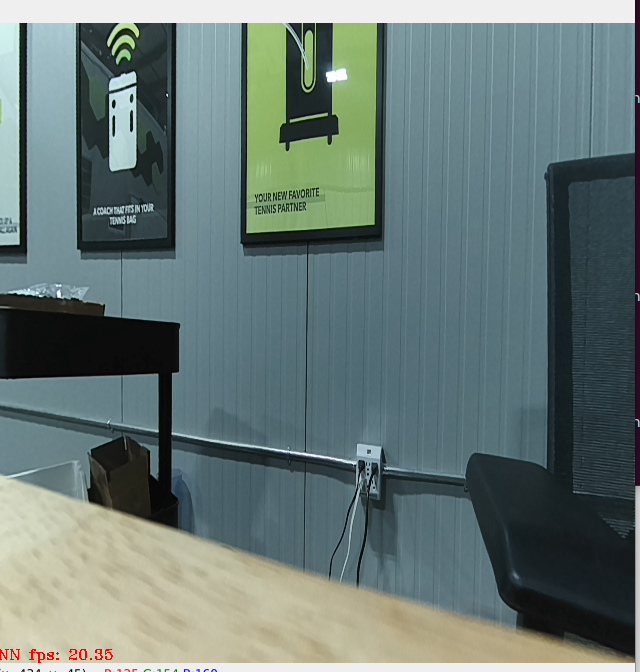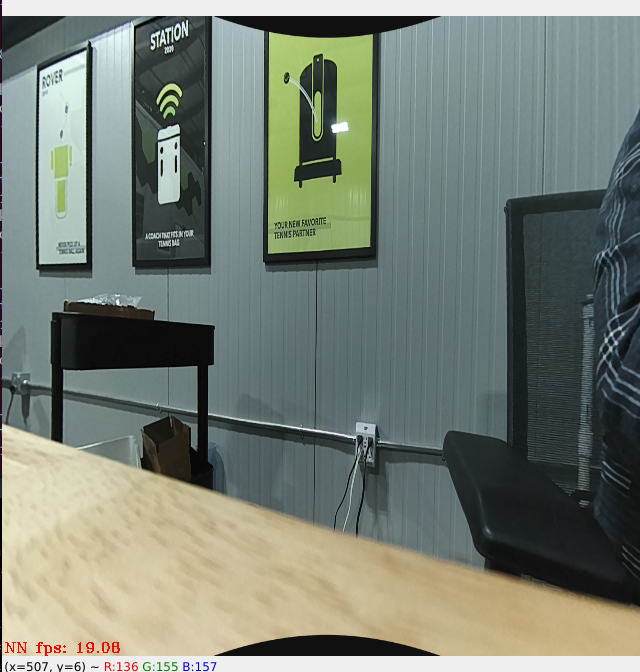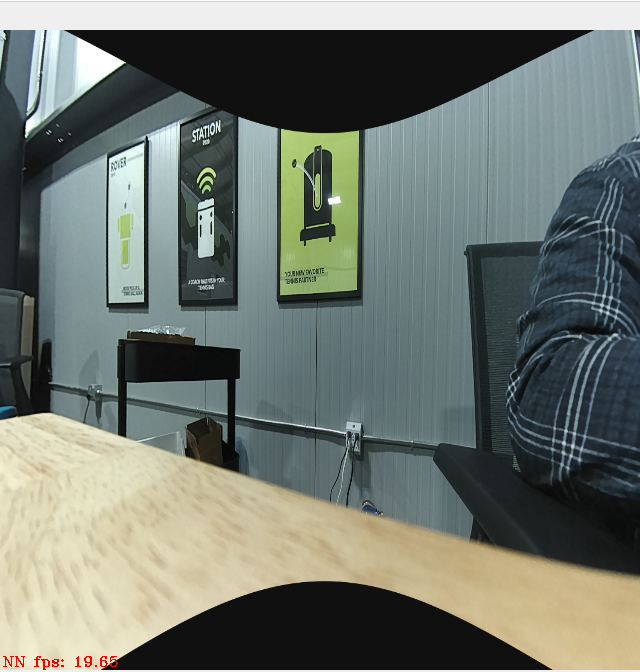I also tried to run the calibration for OAK-1-LITE-W with this json file, and it returned the same error expecting stereo_config.
The workflow to undistort multiple color cameras on devices like OAK-FFC 3P/4P
Hi lincolnxlw ,
Could you create an issue on depthai github repo, so you get notified when this is fixed?
- Edited
Hi erik
Thanks to your suggestion, the folks from the repo suggested a temporary fix. And I am able to do the calibration process. When I try to undistort the camera with Camera node according to the example from your PR, I am able to get a full undistorted image
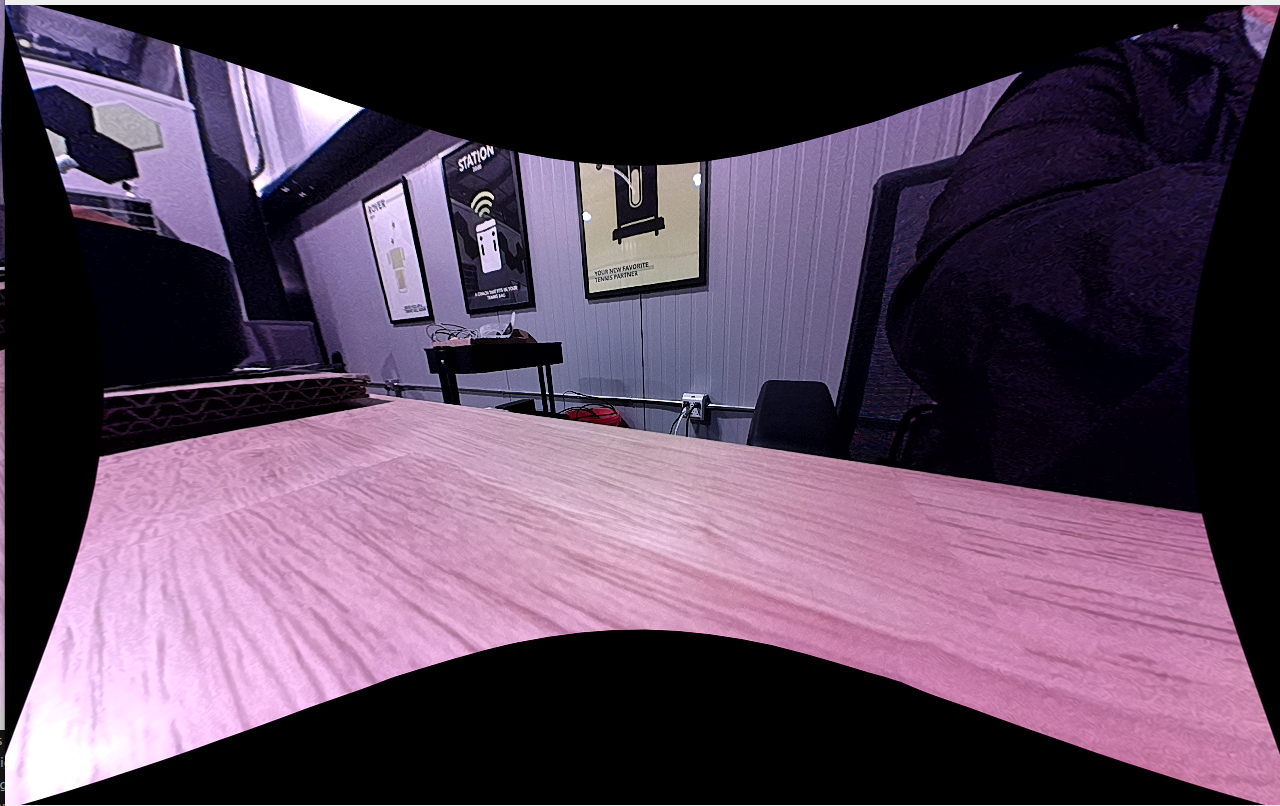
However, there are some features are not currently available in Camera node yet, so when I try to undistort with ColorCamera node following this example. I am only getting the "zoom in" version of the undistorted image.
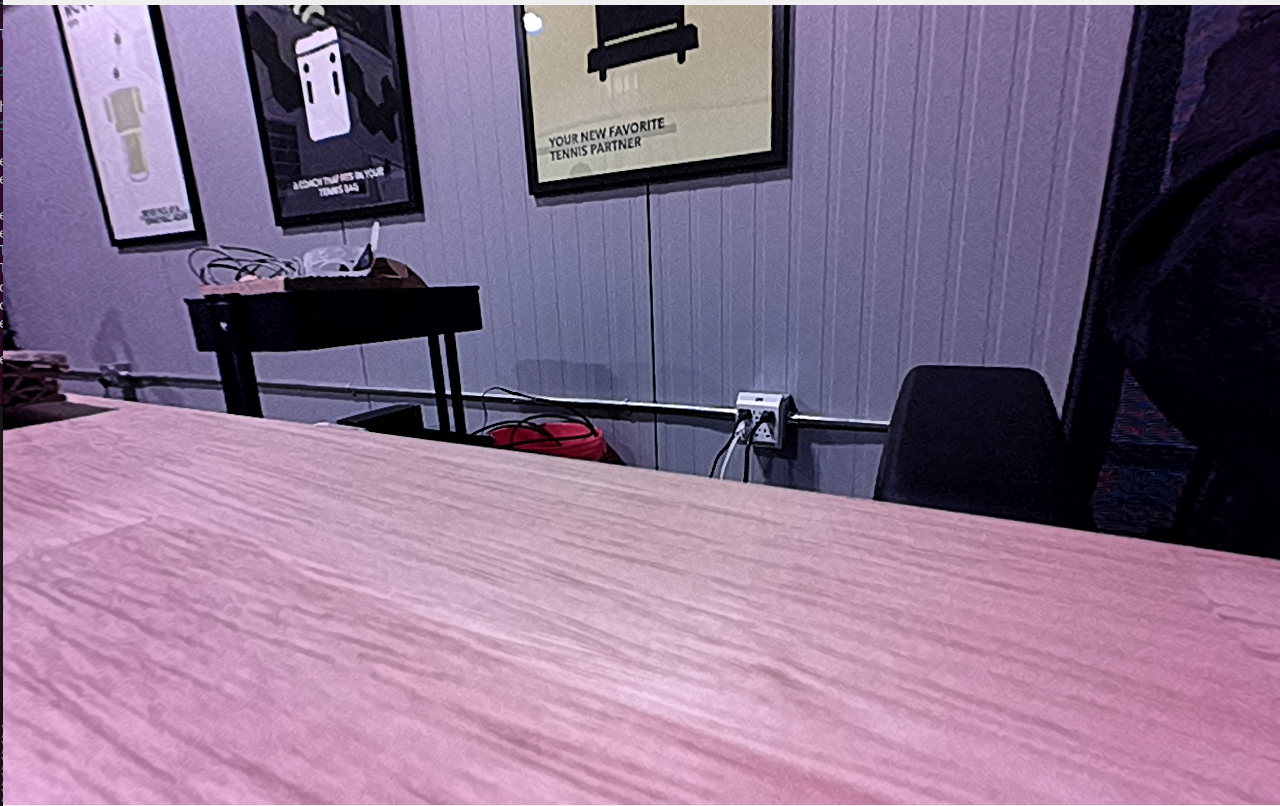
What I need to modify in order to get the full undistorted image using ColorCamera node?
Thanks
Lincoln
Hi lincolnxlw , could you try using the latest depthai develop branch?
Hi erik
I will! I usually use depthai-library from docker for testing. But if I need to use depthai develop branch, does that mean I need to modify this docker file and build with that branch? Or I can find the tag in depthai-library that already built with the develop branch?
Hi lincolnxlw ,
I am not very familiar with docker, but I believe you can just use this tag: https://hub.docker.com/r/luxonis/depthai-library/tags?page=1&name=946a1843dbf9cf86a9c819505d03e0b456400604
Which is linked to latest develop of depthai-python library.
Hi erik
Thanks! How do I know which branch the tag is linked to? I was looking into this.
Hi lincolnxlw
The tag name is the same as the commit id. See https://github.com/luxonis/depthai-python/commits/develop.
Thanks,
Jaka
Hi @erik,
Just want to give you an update with the "zoom-in" issue. Change to the latest develop branch didn't make a difference. But it can be fixed by adding a scaling factor to the camera intrinsics array while creating the maps for undistortion.
Here is the updated function getMesh function for this example
def getMesh(calibData: dai.CalibrationHandler, ispSize, focal_len_scaling_factor: float = 1.0):
M1 = np.array(calibData.getCameraIntrinsics(camSocket, ispSize[0], ispSize[1]))
d1 = np.array(calibData.getDistortionCoefficients(camSocket))
R1 = np.identity(3)
M1_new = M1.copy()
M1_new[0][0] *= focal_len_scaling_factor
M1_new[1][1] *= focal_len_scaling_factor
mapX, mapY = cv2.initUndistortRectifyMap(M1, d1, R1, M1_new, ispSize, cv2.CV_32FC1)
meshCellSize = 16
mesh0 = []
# Creates subsampled mesh which will be loaded on to device to undistort the image
for y in range(mapX.shape[0] + 1): # iterating over height of the image
if y % meshCellSize == 0:
rowLeft = []
for x in range(mapX.shape[1]): # iterating over width of the image
if x % meshCellSize == 0:
if y == mapX.shape[0] and x == mapX.shape[1]:
rowLeft.append(mapX[y - 1, x - 1])
rowLeft.append(mapY[y - 1, x - 1])
elif y == mapX.shape[0]:
rowLeft.append(mapX[y - 1, x])
rowLeft.append(mapY[y - 1, x])
elif x == mapX.shape[1]:
rowLeft.append(mapX[y, x - 1])
rowLeft.append(mapY[y, x - 1])
else:
rowLeft.append(mapX[y, x])
rowLeft.append(mapY[y, x])
if (mapX.shape[1] % meshCellSize) % 2 != 0:
rowLeft.append(0)
rowLeft.append(0)
mesh0.append(rowLeft)
mesh0 = np.array(mesh0)
meshWidth = mesh0.shape[1] // 2
meshHeight = mesh0.shape[0]
mesh0.resize(meshWidth * meshHeight, 2)
mesh = list(map(tuple, mesh0))
return mesh, meshWidth, meshHeightAnd here are the undistorted images with scaling factor=1.0, 0.8 and 0.6. Smaller the factor, the more "zoom out" the image is.
Thanks
Lincoln
